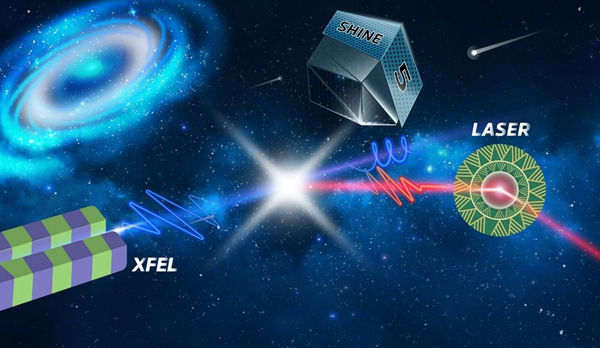






Recently, the free electron laser team of Shanghai Synchrotron Radiation Facility published an invited review article entitled "Features and future of X-ray free electron lasers" in The Innovation (2nd issue, 2021). PhD student Huang Nanshun was the first author, Prof. Deng Haixiao and Prof. Zhao Zhentang were the co-corresponding authors. This work was supported by the National Key Research and Development Program of China, the National Natural Science Foundation of China, Chinese Central Government and Shanghai Government.

Figure 1. X-ray Free Electron Lasers & Extremely Intense Lasers
The X-ray free electron laser (FEL), generating high-brightness X-ray pulses via the relativistic electron beams passing through a spatially periodic magnetic field, is one of the most advanced large-scale scientific facilities in many frontier researches. In this review, the features and advantages, the working principles, the operational status, and the applications of three operation modes of X-rays FELs were presented, including self-amplified spontaneous emission, externally seeded and cavity-based FELs. At present, several X-ray FEL facilities are in operation and under construction worldwide. This review discussed the representative applications of X-ray FELs in many fields, including atomic and molecular physics, coherent X-ray imaging, nonlinear optics and structural biology. In addition, this review stated that the future scientific applications require X-ray FELs with characteristics of both ultra-brightness, full-coherence, ultrafast pulse and controllable polarization, which will bring opportunities and challenges for the future development of X-ray FELs.
The future prospects of X-ray FELs were also provided. For example, new physical mechanism such as self-modulation, are necessary for the further development of high-repetition-rate or the continuous-wave operation X-ray FELs; the micro-bunching physics and related technologies will bring improvements to the next generation of storage ring light source; the high-gradient acceleration technology, such as plasma wakefield acceleration, will contribute and speed up the miniaturization of X-ray FEL facilities, etc.
The Innovation is a transdisciplinary English academic journal and jointly-founded by more than 100 members of the Youth Innovation Promotion Association of the Chinese Academy of Sciences and CellPress. It aims to promote scientific application by publishing the cutting-edge research and high-quality review various fields. The authors of previous issues (Volume 1 issue 1 -- Volume 2 Issue 1) came from 24 countries, and 1/3-1/4 of the corresponding authors of each issue were from overseas. There are 179 editorial board members from 21 countries, and 49% of them are from overseas, including one Nobel laureate and 26 academicians from different fields of Natural Science in various countries. The Innovation has been indexed in DOAJ, ADS, SCOPUS, PubMed etc. The Immediacy Index is 3.571, which equals to Impact Factor ≈16.
Article link: https://doi.org/10.1016/j.xinn.2021.100097 .
—Contributed by English Translation & Edit Group, SINAP